Stockholm Wood City, the world’s largest city built of wood, is being built on a former industrial site. The architecture for the showcase city of the future comes from timber construction pioneers Henning Larsen and White Arkitekter.
When Roald Amundsen reached Antarctica in 1911 with his expedition ship and won the race to the South Pole, the ship was equipped with diesel engines from the Atlas Copco plant in Sickla. The industrial district southeast of Stockholm’s city center developed into an important industrial location in the 19th century with the expansion of the regional rail network. A good century later, a new transformation is beginning. Step by step, Sickla is developing from a former industrial to a residential and working district. The developer Atrium Ljungberg has transformed old brick buildings and is now planning an entire city made of wood together with the architecture firms Henning Larsen and White Arkitekter.
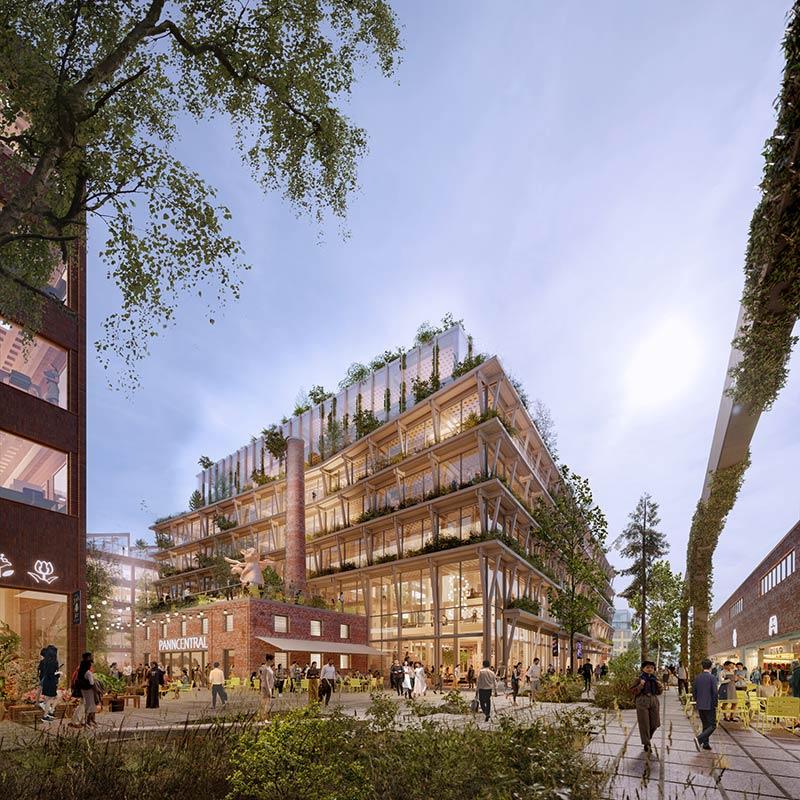
Flight through the Wood City
Past exciting facades that combine the brick of industrial heritage with modern timber construction, the virtual drone flight begins through “the largest city in the world built of wood,” as Søren Øllgaard, architect and partner at Henning Larsen puts it. Plenty of greenery sprouts on the terraces and public squares of this “bold vision of a climate-friendly city of the near future.”
It gets even greener on the roofs, where gardens line up with glass houses and urban gardening beds. In between, photovoltaic systems generate solar power and provide a central energy supply. “The architects have made a lot of reference to nature in the structures, such as the green roofs that provide better insulation and large glass areas that let natural light inside. This embodies our vision of a city that thrives in harmony with nature,” the real estate developer says.
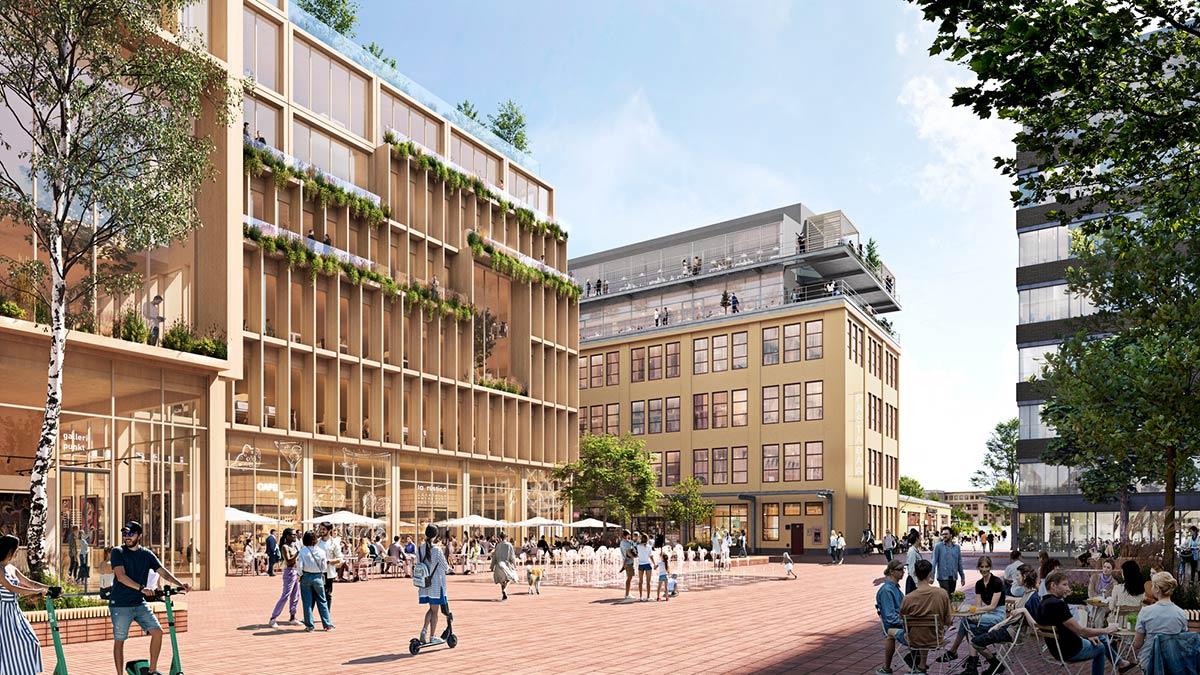
Weaving new and old
In the former industrial area of Sickla, new and old are interwoven, which ensures that the neighborhood does not look like it came out of a retort, but as if it had grown organically. With a commitment to building in the existing fabric, an attempt has been made to preserve the historic substance of the former industrial site. The former formalin factory now houses a coffee roastery, and a preschool has moved into the old boiler house with its typical pioneer chimney.
This is not only an important step for us as a company, but a historic milestone for Swedish innovation capability.
Annica Ånäs, CEO Atrium Ljungberg
Construction of the world’s largest timber construction project is scheduled to start in 2025, with the first buildings completed in 2027. Around 7,000 offices and 2,000 apartments are to be built on an area of around 250,000 square meters. The Architectural firms from Denmark and Sweden are pioneers in modern timber construction and have already implemented major projects. For example, the Sara Kulturhus, timber skyscraper, which White Arkitekter implemented in Sweden’s far north. And Henning Larsen is currently transforming a former landfill site in Copenhagen into the timber town of Fælledby.
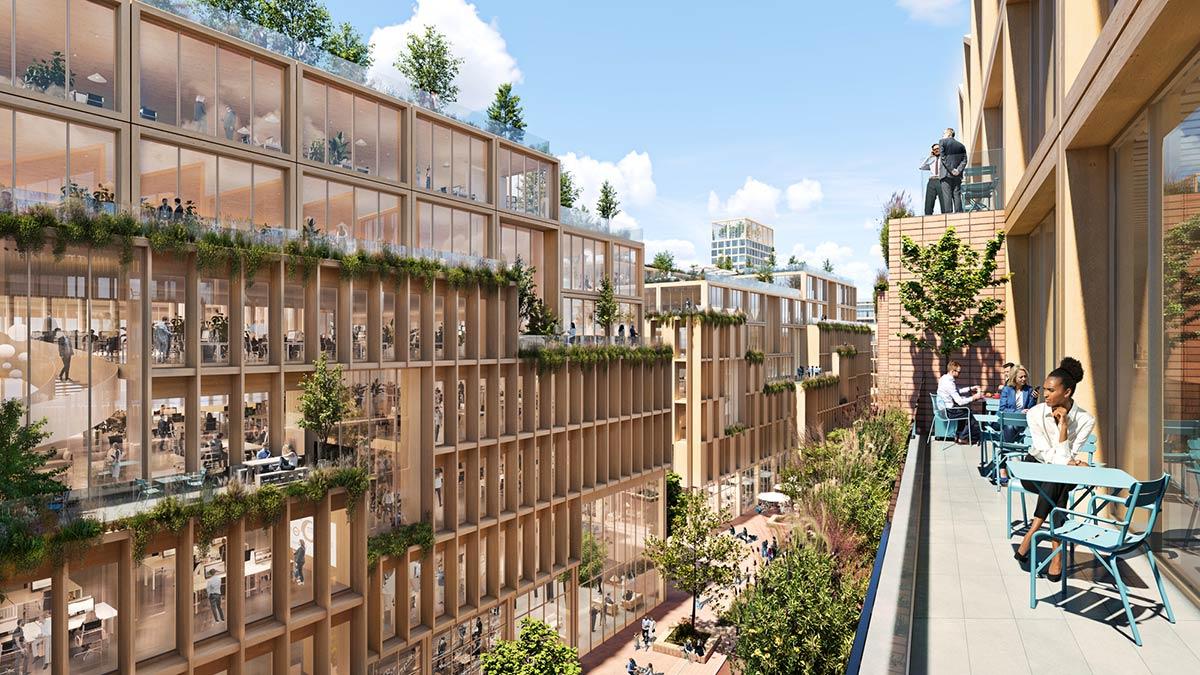
Resource-efficient and energy self-sufficient
If developer Atrium Ljungberg has its way, Wood City will usher in a new era of sustainable Architecture and urban planning: “This is not only an important step for us as a company, but a historic milestone for Swedish innovation. Stockholm Wood City manifests our future,” says Annica Ånäs, CEO of the company. “There is a strong demand from tenants for innovative, sustainable solutions – a demand we are meeting with this initiative.”
Wood construction creates a significantly reduced environmental footprint, both during the construction phase and throughout the life cycle.
Atrium Ljungberg, Immobilien-Developer
The focus on the development of office space is a response to the lack of office space south of Stockholm’s central business district, which should reduce commuting times for many people. Wood City’s sustainability concept is based on resource-efficient construction methods, circular material flows and a central, self-sufficient energy supply via photovoltaics, geothermal energy and corresponding buffer storage.
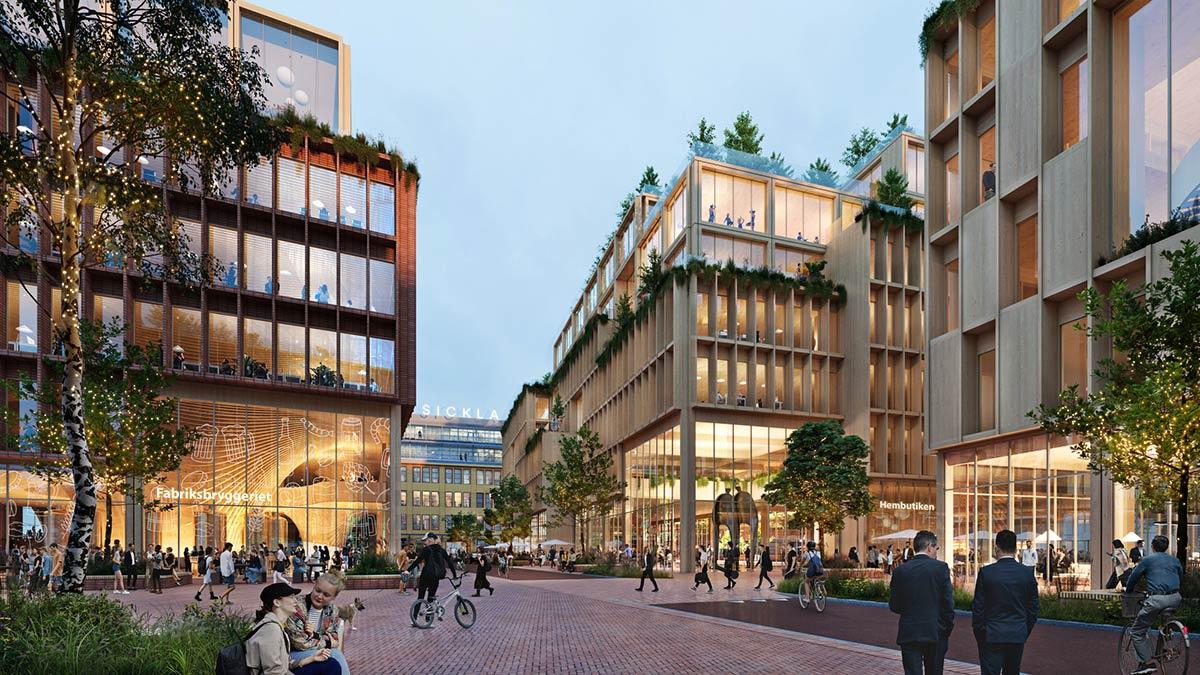
“Wood construction creates a significantly reduced environmental footprint, both during the construction phase and throughout the entire life cycle,” says Atrium Ljungberg, explaining one of the advantages offered by wood as a building material. The area is to be realized in different phases so that the experience gained can be incorporated into the next construction phase. Overall, it is hoped that the project will become a kind of catalyst for innovation in the construction sector. In the future, these could help to drive the urgently needed turnaround in construction.
Text: Gertraud Gerst
Visualisierungen: Atrium Ljungberg, White Arkitekter


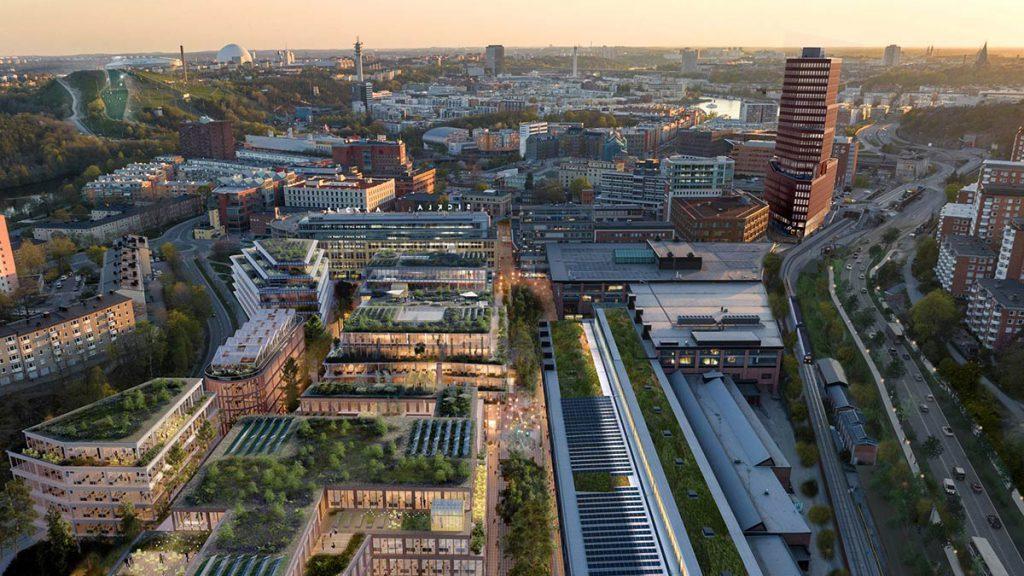
iThere are no comments
Add yours